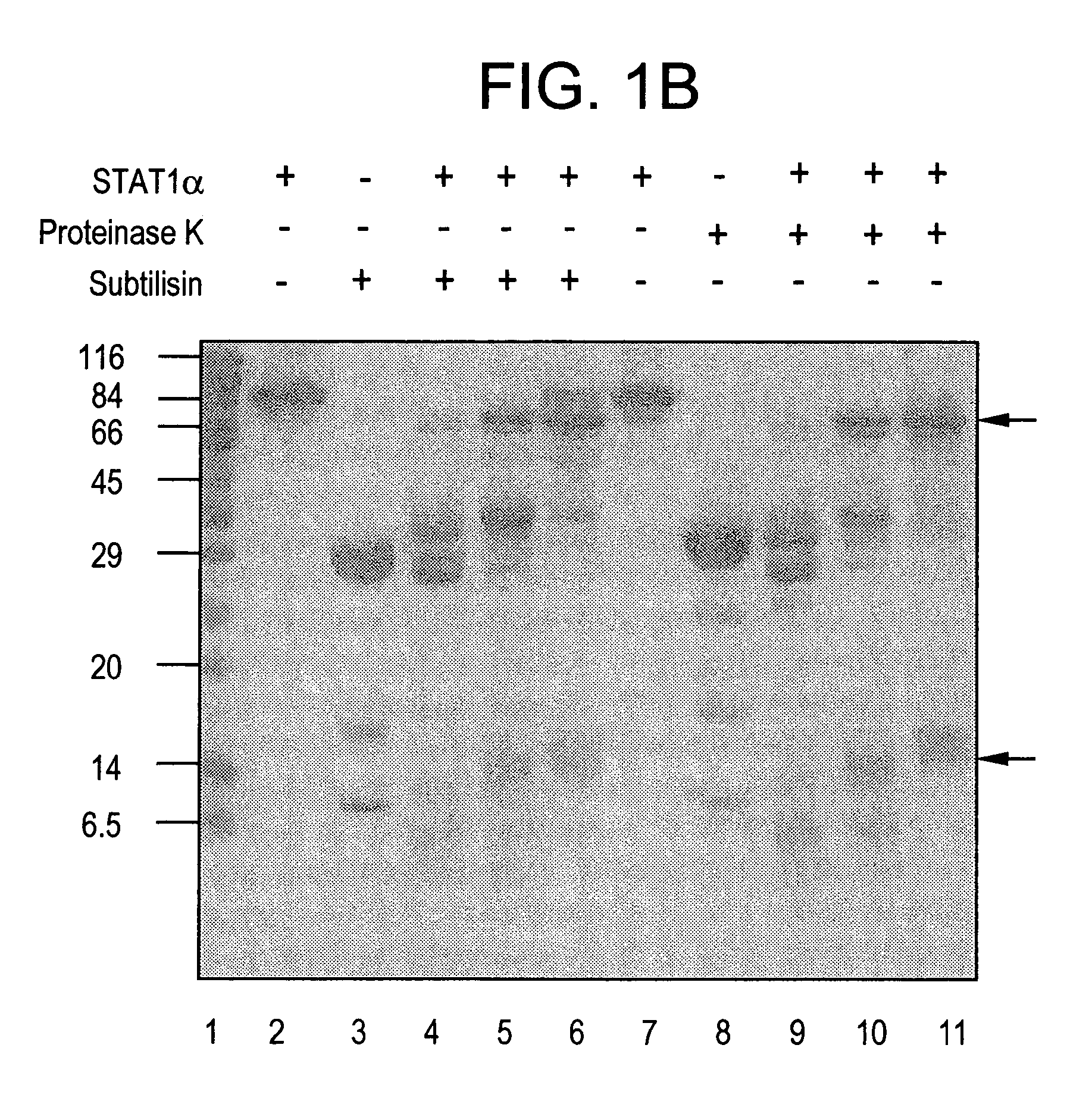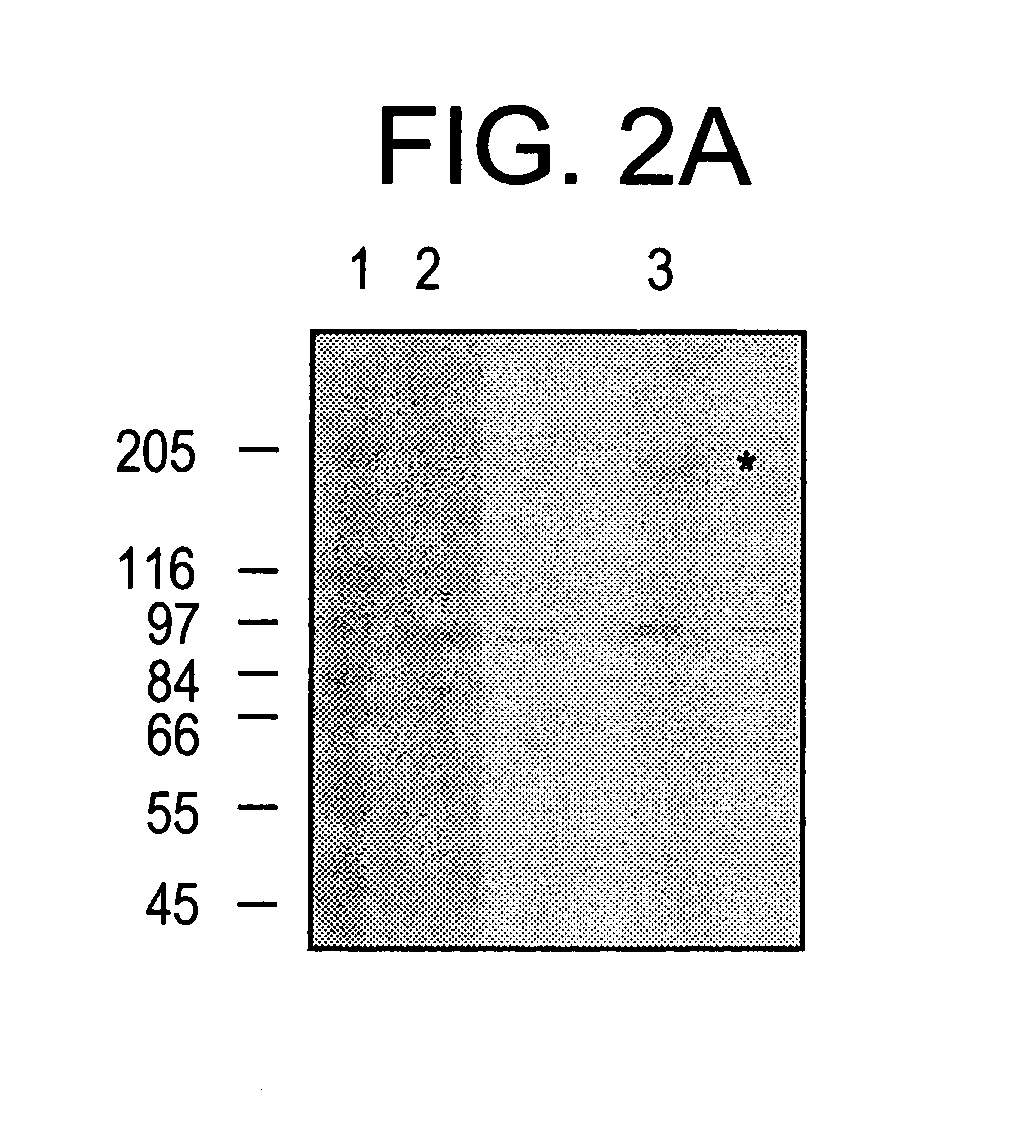Purified Stat proteins and methods of purifying thereof
a technology of stat proteins and purification methods, which is applied in the field of purifying recombinant stat proteins, can solve the problems of inability to isolate the large quantities needed for biochemical studies, and achieve the effects of high throughput, and enhancing the binding affinity of two adjacent stat dimers
- Summary
- Abstract
- Description
- Claims
- Application Information
AI Technical Summary
Benefits of technology
Problems solved by technology
Method used
Image
Examples
example
DNA Binding of In Vitro Activated Purified Stat1α, Stat1β and Truncated Stat1: Interaction Between NH2 Terminal Domains Stabilizes Binding of Two Dimers to Tandem DNA Sites
Introduction
[0187] To conveniently study the biochemistry of activated Stat molecules, it is necessary not only to use recombinant DNA techniques to produce large amounts of protein, but it is also necessary to phosphorylate the correct tyrosine residue and to separate the phosphorylated and nonphosphorylated proteins. The present invention teaches proteins, nucleic acids, and methods that satisfy these heretofore, unattained criteria.
[0188] Human Stat1α and Stat1β, a shorter protein translated from an alternatively spliced mRNA, were produced in insect cells infected with recombinant baculovirus, thereby allowing milligram amounts of these proteins to be isolated at a time. The protease sensitivity of purified Stat1α was subsequently studied. A stable truncated form of Stat1 (Stat1tc) was then characterized an...
PUM
| Property | Measurement | Unit |
|---|---|---|
| Fraction | aaaaa | aaaaa |
| Current | aaaaa | aaaaa |
| Digital information | aaaaa | aaaaa |
Abstract
Description
Claims
Application Information
 Login to View More
Login to View More - R&D
- Intellectual Property
- Life Sciences
- Materials
- Tech Scout
- Unparalleled Data Quality
- Higher Quality Content
- 60% Fewer Hallucinations
Browse by: Latest US Patents, China's latest patents, Technical Efficacy Thesaurus, Application Domain, Technology Topic, Popular Technical Reports.
© 2025 PatSnap. All rights reserved.Legal|Privacy policy|Modern Slavery Act Transparency Statement|Sitemap|About US| Contact US: help@patsnap.com



